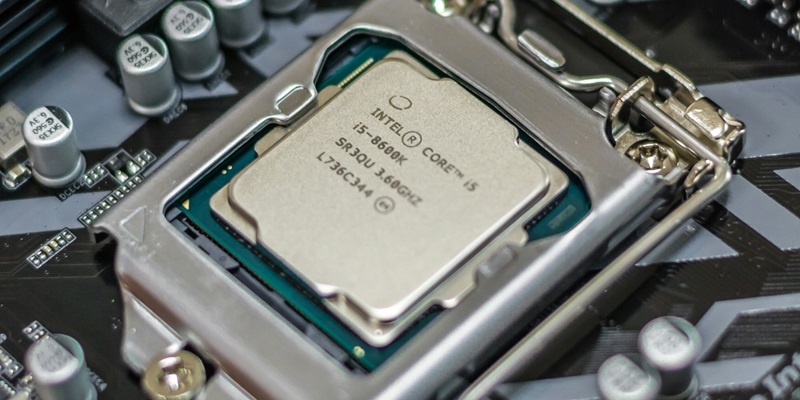Intel’s upcoming Arrow Lake CPU, particularly the Intel Core Ultra 5 245K, promises significant advancements, as evidenced by recent Geekbench scores demonstrating its superior multi-core performance against AMD’s Zen 5 lineup. This unveiling showcases the Core Ultra 5 245K in a Colorful iGame Z890 Ultra motherboard, with clock speeds reaching 4.2 GHz base and 5.14 GHz boost, indicating that Intel is aiming to significantly improve its multi-core capabilities. As the CPU landscape grows increasingly competitive, this new development might be a pivotal moment for Intel, especially considering the challenges posed by AMD’s Ryzen CPUs.
Benchmark Analysis and Performance Metrics
Multi-Core Performance Against AMD’s Ryzen Series
The Geekbench scores for the Intel Core Ultra 5 245K spotlight remarkable gains in multi-core performance, particularly when compared to key competitors in AMD’s Ryzen series. Specifically, the Core Ultra 5 245K garnered a multi-core score of 18,354, putting it 44% ahead of AMD’s Ryzen 5 9600X. These results are especially intriguing because they signal a significant performance edge for Intel’s new CPU despite its 14-core configuration lacking Hyper-Threading. In the context of competing with AMD’s Ryzen 7 9700X, the Core Ultra 5 245K excels further, outperforming the eight-core competitor by 26%.
These numbers suggest that Intel’s Arrow Lake architecture may have narrowed the performance gap with AMD. Multi-core performance is a critical benchmark for tasks that demand parallel processing capabilities, such as video editing, 3D rendering, and other professional applications. With these Geekbench results, Intel appears poised to reassert its dominance in this crucial metric. However, while pre-release performance metrics are promising, it remains essential to wait for post-retail validation to confirm these preliminary advantages.
Single-Core Performance: Contextual Gains and Comparisons
While the multi-core performance of the Intel Core Ultra 5 245K has garnered much attention, its single-core performance also warrants a closer look. On Geekbench, the Core Ultra 5 245K scored 2,248 points in single-core tests, positioning it 11% slower than AMD’s Ryzen 5 9600X in this specific metric. This comparison highlights a nuanced performance profile for Intel’s new CPU. When juxtaposed with the Ryzen 7 9700X, however, the Core Ultra 5 245K manages to outshine it, demonstrating the complexities in performance metrics when evaluating across different use cases and workloads.
Single-core performance remains significant for applications that require high clock speeds and rely heavily on individual core power, such as gaming and certain software programs. The Intel Core Ultra 5 245K’s 11% lag behind AMD’s Ryzen 5 9600X suggests that while it excels in multi-core environments, there is still room for improvement in single-core metrics. This could be a strategic area for Intel to focus on going forward, particularly as gaming and specific industry applications continue to prioritize single-core capabilities.
Comparative Insights: Old vs. New
Moving Beyond the Core i5-14600K
In the context of Intel’s internal product development, the Core Ultra 5 245K also marks a notable improvement over its predecessor, the Core i5-14600K. The new CPU exhibits an 11% increase in single-core performance and a 5% boost in multi-core performance. These improvements are noteworthy, especially considering Arrow Lake CPUs do not feature Hyper-Threading, implying that the efficiency and performance enhancements are derived from architectural optimizations and improvements. Such advancements suggest that Intel is moving away from merely adding more threads and towards refining processing efficiency and core performance.
Contrasting the Core Ultra 5 245K against the Core i5-14600K reveals Intel’s shift in focus towards overall system efficiency and real-world performance gains. These evolutionary steps indicate the company’s dedication to advancing its architectures to compete more robustly with AMD. As modern CPUs support increasingly diverse workloads, these gains could translate to better performance across consumer, professional, and industrial applications, making Arrow Lake a more versatile and potent offering in Intel’s lineup.
Market Implications and Future Prospects
Intel’s upcoming Arrow Lake CPU, specifically the Intel Core Ultra 5 245K, shows great promise with substantial advancements, as recent Geekbench scores have indicated its superior multi-core performance over AMD’s Zen 5 series. This chip was tested on a Colorful iGame Z890 Ultra motherboard, with base clock speeds of 4.2 GHz and a boost clock reaching up to 5.14 GHz. These specs suggest that Intel is focusing heavily on enhancing multi-core functionalities, which could present a significant leap in their processor lineup.
In the highly competitive CPU market, dominated equally by Intel and AMD, such innovation is crucial for staying relevant. AMD’s Ryzen CPUs have posed considerable challenges, setting a high bar with their multi-core efficiencies and performance benchmarks. Intel’s emphasis on multi-core improvements might well herald a pivotal shift, potentially redefining competitive dynamics in the industry. As consumers and tech enthusiasts await more comprehensive performance reviews and market release, this development could signal a new era for Intel in its quest to surpass AMD’s dominance in multi-core processing power.

